Think of Honda's new VFR1200X as a touring motorcycle with styling cues favoring the ADV ranks. Clearly, though, this bike isn't intended to encroach on the ADV market or play on its turf. In truth, the VFR1200X is a bike best suited for travel over paved highways rather than on unmarked dirt roads and trails.
Pause now, for this: the VFR1200X isn’t new at all—it’s been in service since 2012 as an Old World model, marketed in Europe as the Crosstourer. But ADV-style bikes today compose a significant portion of America’s touring-bike market, and with that in mind, when Big Red ramped up the Crosstourer to comply with Euro 4 regulations, it also rebadged it as the VFR1200X for the US market.
That move resulted in a few American motojournalists, me included, to gather in Moab, Utah, for a first look and ride of the new/old VFR1200X. So I swung a leg over the 1200X’s 33.5-inch-high saddle for a first ride.
Before we thumb-start the 1,237cc V-4 engine to life, let’s do a quick walk-around of the new bike. Or, rather, bikes; there actually are two versions of the 1200X, the base-priced 1200X ($15,599 MSRP) with manual-shift transmission and a DCT (Dual Clutch Transmission) version ($15,999). Both pack half a dozen gears inside their transmissions, and both are available in Pearl Black paint only. Furthermore, if you feel like upgrading with some accessories—and Honda has a bevy of add-ons waiting in the wings for either model—you can buy such goodies as detachable saddlebags, tail trunk, centerstand, passenger 12-volt power socket, heated handgrips and more.
First, though, here’s what everyone gets for their money. Tops on the upgrades for 2016 are self-cancelling turn signals, a nifty adjustable windscreen that you can position and lock with one hand (boasting three inches of up/down movement) while riding, and a 12-volt power socket to feed GPS and other electronic do-dads that make today’s bike riding so adventurous for everybody. There’s also a reconfigured seat making it easier to stretch your legs so your ADV waffle stompers readily find terra firma at stops, and of course the DCT option that, as you’ll learn, is so nifty you might never want a standard-shift bike again.
Here’s a quick overview of the X’s DCT that automatically finds the proper gear at all times. The self-shifting transmission offers a standard drive mode (noted as D on the digital gauge) that is most suitable for everyday riding and optimum fuel economy. A push of the button on the handlebar’s right control pod automatically commands DCT for sport mode (S), which itself has three levels of power delivery with 1 for gentle up- and down-shifting; 3 to bring the engine up to redline in each gear for optimum power delivery; and 2 is in between these levels.
If you want to take shifting matters into your own hands, a paddle shifter near the left handgrip lets you click with forefinger or thumb to up- and down-shift, respectively, through the gears. There is no foot shift lever (one is available as an add-on accessory item), and you can go from D to S and back again while riding. The only caveat is that selecting any of the three S levels requires rolling off the throttle to make it happen.
This is Honda’s third generation of dual-clutch technology, and it’s by far the best and most versatile yet. There also are three levels of traction control (known as Honda Selectable Torque Control or HSTC) in the mix that’s a standard feature for the manual-shift model as well. A single button lets you select the setting or turn it off completely. To gain a thorough understanding of DCT features, it’s best to talk with your local Honda dealer. Better yet, if you can get seat time on Honda’s DCT simulator at a dealer show, do so. This was my first experience riding a DCT bike, and to be honest, I found myself gravitating to it rather than the conventional-shift bike during our Moab trek.
The DCT and HSTC are especially convenient when navigating on dirt or gravel roads. The traction control found a place in my heart, too, when the rear tire began spinning on a gravelly section during a romp on a dirty paved back road.
Don’t mistake the 1200X’s chassis for a simple makeover of the VFR1200F, either. The 43mm KYB fork and linkage-assisted KYB rear shock have their own spring and adjustable rebound damping calibrations for two-up touring, and the steering head is set at 28 degrees of rake with 4.2 inches of trail. Linked anti-lock braking is standard for the twin 310mm rotors up front and 276mm rear rotor and, to give the X model a more ADV-like footprint on the pavement (and sometimes dirt), the cross-laced spoke wheels carry tubeless Pirelli Scorpion Trail tires (110/80-R19 front and 150/70-R17 rear).
Thumb the starter and you’re greeted with a pleasant burble from the single muffler. Two-up touring with loaded bags demands immediate torque to the rear tire, and that’s precisely what you get with this engine. Honda engineers whittled new cam lobes and re-wired the ECU’s brain to create an engine that offers gobs of torque practically the moment you twist the throttle, which has a cable-initiated ride-by-wire design. Why a cable? The goal was to utilize RBW, yet retain conventional feel at the grip.
One Honda spokesman touted the VFR1200X’s engine as one with “low- and mid-range torque,” and he was spot on. This drivetrain crams as much torque through its driveshaft as it can, and the payback is an engine that’s easy to manage. Coupled with the DCT feature, you almost feel like you’re in command of a video game as you twist (the grip) and steer (the handlebar) through the turns. No clutching necessary.
In the end, you’re treated to a motorcycle boasting a chassis that’s taut for wide-open stretches of highway and responsive when grappling tight turns. The suspension strikes a good balance and the handling is appropriate to the mission: not too sporty, just plenty of feel and stability. Combine those attributes with an engine that delivers power anytime, anywhere, and you have a really capable long-distance runner that just happens to be dressed up like a round-the-world machine. So probably you should Just keep it on the pavement. If you want stones in your knobbies, buy the Africa Twin. The VFR1200X is a street bike, and a darn fine one at that.










/cloudfront-us-east-1.images.arcpublishing.com/octane/GWSSARGBVW2XHAMW2CJZBROWLI.jpg)


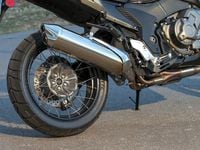
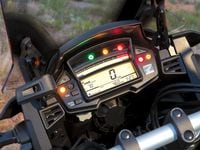


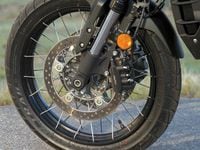
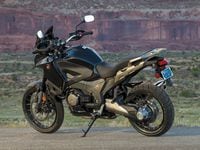
/cloudfront-us-east-1.images.arcpublishing.com/octane/2WF3SCE3NFBQXLDNJM7KMXA45E.jpg)
/cloudfront-us-east-1.images.arcpublishing.com/octane/G4MG6OUCJNBSHIS2MVVOTPX65E.jpg)
/cloudfront-us-east-1.images.arcpublishing.com/octane/IIGGWFOTOJGB7DB6DGBXCCMTDY.jpg)
/cloudfront-us-east-1.images.arcpublishing.com/octane/QSTCM6AVEZA5JJBUXNIQ3DSOF4.jpg)
/cloudfront-us-east-1.images.arcpublishing.com/octane/U4I7G625B5DMLF2DVIJDFZVV6M.jpg)
/cloudfront-us-east-1.images.arcpublishing.com/octane/B6XD6LS6IVCQPIU6HXDJSM3FHY.jpg)
/cloudfront-us-east-1.images.arcpublishing.com/octane/ICL63FEDDRDTTMINYICCEYGMDA.jpg)
/cloudfront-us-east-1.images.arcpublishing.com/octane/FCGZHQXRBZFLBAPC5SDIQLVF4I.jpg)
/cloudfront-us-east-1.images.arcpublishing.com/octane/WNOB6LDOIFFHJKPSVIWDYUGOPM.jpg)

/cloudfront-us-east-1.images.arcpublishing.com/octane/X33NU3E525ECRHXLNUJN2FTRKI.jpg)
/cloudfront-us-east-1.images.arcpublishing.com/octane/6KKT5NNL2JAVBOXMZYS5ZO76YA.jpg)
/cloudfront-us-east-1.images.arcpublishing.com/octane/J5RKG5O455GMPGQRF2OG6LRT7A.jpg)
/cloudfront-us-east-1.images.arcpublishing.com/octane/GX2CIZKQVRH2TATDM26KFG2DAE.jpg)
/cloudfront-us-east-1.images.arcpublishing.com/octane/ZWIDYSAKQZHD5BHREMQILXJCGM.jpg)
/cloudfront-us-east-1.images.arcpublishing.com/octane/CYUHJZCTSJCH3MRAQEIKXK7SCQ.jpg)
/cloudfront-us-east-1.images.arcpublishing.com/octane/LKOFINY56FCXJCANJ5M7ZDQUBY.jpg)
/cloudfront-us-east-1.images.arcpublishing.com/octane/4NBPDACMWJH63JQYJVK3QRBDZI.jpg)
/cloudfront-us-east-1.images.arcpublishing.com/octane/KKHQHRR3FJGX7H2IPU6RALMWG4.jpg)

/cloudfront-us-east-1.images.arcpublishing.com/octane/5IOFS5JAE5FOXMNA23ZRAVVYUU.jpg)
/cloudfront-us-east-1.images.arcpublishing.com/octane/CGXQ3O2VVJF7PGTYR3QICTLDLM.jpg)
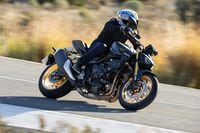
/cloudfront-us-east-1.images.arcpublishing.com/octane/OQVCJOABCFC5NBEF2KIGRCV3XA.jpg)